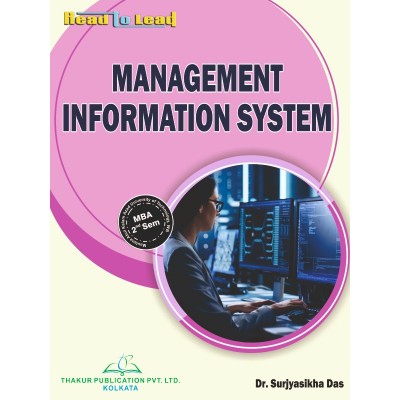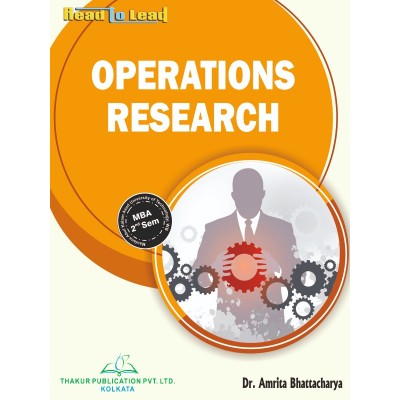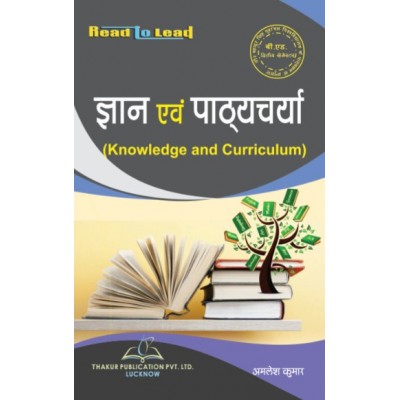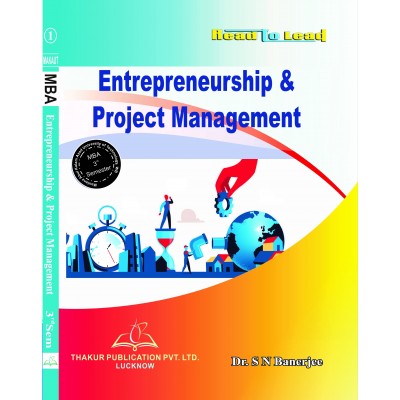Categories
- Pharmacy
-
Nursing
-
MBA
-
BBA
- U.P. State University
- Veer Bahadur Singh Purvanchal University, Jaunpur
- Chaudhary Charan Singh University, Meerut
- Dr. Bhimrao Ambedkar University, Agra
- Chhatrapati Shahu Ji Maharaj University, Kanpur
- Mahatma Jyotiba Phule Rohilkhand University, Bareilly
- Mahatma Gandhi Kashi Vidyapith, Varanasi
- Dr. Ram Manohar Lohia Avadh University, Ayodhya
- Deen Dayal Upadhyaya Gorakhpur University
- Prof. Rajendra Singh (Rajju Bhaiya) University, Prayagraj
-
BCA
- UP State Universities
- University of Pune
- I.K.Gujral Punjab Technical University (PTU)
- University of Rajasthan
- Rashtrasant Tukadoji Maharaj Nagpur University
- Uttar Pradesh NEP2020
- University of Rajasthan ,Jaipur (According to NEP-2020)
- BCCA (B. Com - Computer Science)
- Haryana
- West Bengal
- BBA (CA)
- PUNE BCA (Sci,Commerce)/B.Com (CA)
- Dr. A. P. J. Abdul Kalam Technical University, Lucknow ( AKTU )
- MCA
-
B Ed
- Lucknow University B.Ed Books
- Chaudhary Charan Singh University/Maa Shakambhari University, Saharanpur
- Dr Bhim Rao Ambedkar University, Agra
- Mahatma Gandhi Kashi Vidyapeeth, Varanasi
- Chhatrapati Shahu Ji Maharaj University
- Prof. Rajendra Singh (Rajju Bhaiya) University, Prayagraj (PRSU)
- Mahatma Jyotiba Phule Rohilkhand University(Mjpru), Bareilly
- Dr. Ram Manohar Lohia Avadh University, Ayodhya
- Bundelkhand University, Jhansi
- B.A,B.ed
- B.Sc, B.ed
- Deen Dayal Upadhyaya Gorakhpur University
- Veer Bahadur Purvanchal University (VBPU)
- Maharaja Suhel Dev State University ,Azamgarh (MSDSU)
- Raja Mahendra Pratap Singh State University, Aligarh (RMPSSU)
- Barkatullah Vishwavidyalaya (Bhopal)
- Jiwaji University (Gwalior)
- Vikram University (Ujjain)
- Dr. Harisingh Gour University (Sagar)
- Devi Ahilya Vishwavidyalaya (Indore)
- Rani Durgavati Vishwavidyalaya (Jabalpur)
- Awadhesh Pratap Singh University (Rewa)
- Maharaja Chhatrasal Bundelkhand University (Chhatarpur)
- D. EL. ED
- TET
-
B Com
-
B Sc
- B.Sc. U.P. State Universities Common Syllabus NEP
- Veer Bahadur Singh Purvanchal University, Jaunpur
- University of Lucknow
- Chaudhary Charan Singh University, Meerut
- Madhya Pradesh
- Chhatrapati Shahu Ji Maharaj University, Kanpur
- Dr. Bhimrao Ambedkar University, Agra
- Mahatma Gandhi Kashi Vidyapith, Varanasi
- DEEN DAYAL UPADHYAYA GORAKHPUR UNIVERSITY
- Prof. Rajendra Singh (Rajju Bhaiya) University, Prayagraj
- Dr. Ram Manohar Lohia Avadh University, Ayodhya
- Mahatma Jyotiba Phule Rohilkhand University, Bareilly
- Uttarakhand State Universities
- B.Sc. Bihar Universities Common Syllabus NEP
- University of Rajasthan (Jaipur)
- Haryana
-
Bachelor of Arts [B.A.]
- B.A. Of U.P. State Universities Common Syllabus NEP
- Veer Bahadur Singh Purvanchal University, Jaunpur
- University of Lucknow
- Chaudhary Charan Singh University, Meerut
- Chhatrapati Shahu Ji Maharaj University, Kanpur
- Dr. Bhimrao Ambedkar University, Agra
- Mahatma Gandhi Kashi Vidyapith, Varanasi
- Deen Dayal Upadhyaya Gorakhpur University
- Prof. Rajendra Singh (Rajju Bhaiya) University, Prayagraj
- Dr. Ram Manohar Lohia Avadh University, Ayodhya
- Mahatma Jyotiba Phule Rohilkhand University, Bareilly
- Madhya Pradesh
- Uttarakhand
- Bihar
- University of Rajasthan (Jaipur Syllabus as Per NEP2020)
- Haryana NEP-2020
- B Tech
- LLB
- SWA Education
Management Information System MAKAUT MBA SECOND SEM

Authors - Dr. Surjyasikha Das
ISBN - 978-93-5755-896-9
Tax excluded
Contents
|
MODULE-1 |
||
|
Chapter 1: Introduction to Production & Operations Management |
||
|
1.1. |
Production And Operations Management |
13 |
|
1.1.1. |
Introduction |
13 |
|
1.1.2. |
Meaning & Definition of Production Management |
13 |
|
1.1.3. |
Meaning & Definition of Operations Management |
14 |
|
1.1.4. |
Nature of Production & Operations Management |
14 |
|
1.1.5. |
Scope of Production & Operations Management |
14 |
|
1.1.6. |
Objectives of Production and Operations Management |
15 |
|
1.1.7. |
Functions of Production and Operations Management |
16 |
|
1.1.8. |
Factors Affecting Operations Management |
17 |
|
1.1.9. |
Importance of Production & Operations Management |
18 |
|
1.1.10. |
Problems in Production and Operations Management |
18 |
|
1.1.11. |
Difference between Manufacturing/ Production and Service Operations |
19 |
|
1.2. |
Product Process Matrix |
19 |
|
1.2.1. |
Introduction |
19 |
|
1.2.2. |
Importance of Process Product Matrix |
20 |
|
1.3. |
Capacity Planning |
20 |
|
1.3.1. |
Meaning of Capacity |
20 |
|
1.3.2. |
Meaning & Definition of Capacity Planning |
20 |
|
1.3.3. |
Objectives of Capacity Planning |
21 |
|
1.3.4. |
Types of Capacity Planning |
21 |
|
1.3.5. |
Factors Affecting Capacity Planning |
22 |
|
1.3.6. |
Importance of Capacity Planning |
23 |
|
1.3.7. |
Process of Capacity Planning |
23 |
|
1.3.7.1. |
Assessing Existing Capacity /Measurement of Capacity |
23 |
|
1.3.7.2. |
Estimating/Forecasting Future Capacity Needs |
24 |
|
1.3.7.3. |
Identifying Alternative Ways to Modify Capacity |
24 |
|
1.3.7.4. |
Evaluation of Capacity Alternatives |
26 |
|
1.3.7.5. |
Selecting the Best Capacity Alternative |
26 |
|
1.4. |
Production Manager |
26 |
|
1.4.1. |
Meaning of Production Manager |
26 |
|
1.4.2. |
Responsibilities of Production Manager |
27 |
|
1.5. |
Production as a Coordination Function |
27 |
|
1.6. |
Production Cycle |
29 |
|
1.6.1. |
Introduction of Production Cycle |
29 |
|
1.6.2. |
Stages of the Production Cycle |
29 |
|
1.6.3. |
Importance of Production Cycle |
30 |
|
1.7. |
Production Planning & Control (PPC) Concept |
30 |
|
1.7.1. |
Meaning and Definition of Production Planning and Control (PPC) |
30 |
|
1.7.2. |
Objectives of Production Planning and Control |
31 |
|
1.7.3. |
Importance of Production Planning and Control |
31 |
|
1.7.4. |
Functions of Production Planning and Control |
32 |
|
1.7.4.1. |
Production Planning Functions |
32 |
|
1.7.4.2. |
Production Control Functions |
32 |
|
1.7.5. |
Stages/Phases of Production Planning and Control |
33 |
|
1.7.6. |
Factors Determining the Production Planning and Control |
34 |
|
1.8. |
Exercise |
35 |
|
|
|
|
|
Chapter 2: Facilities Location |
||
|
2.1. |
Facilities Location |
37 |
|
2.1.1. |
Meaning and Definition of Facility/Plant Location |
37 |
|
2.1.2. |
Need for a Good Plant Location |
37 |
|
2.1.3. |
Types of Plant Location |
39 |
|
2.1.3.1. |
Single Facility Location |
39 |
|
2.1.3.2. |
Multi-Facility Location |
39 |
|
2.1.4. |
Advantages of Plant Location |
40 |
|
2.1.5. |
Techniques of Plant Location |
40 |
|
2.1.6. |
Factors Influencing Plant Location |
41 |
|
2.1.7. |
Tangible Factors Influencing Location in Manufacturing Operations |
41 |
|
2.1.8. |
Intangible Factors Influencing Location in Service Operations |
42 |
|
2.1.9. |
Economic Survey of Site Selection |
43 |
|
2.2. |
Exercise |
44 |
|
|
|
|
|
Chapter 3: Plant Layout |
||
|
3.1. |
Plant Layout |
45 |
|
3.1.1. |
Meaning and Definition of Plant/Facility Layout |
45 |
|
3.1.2. |
Need for a Good Plant Layout |
45 |
|
3.1.3. |
Characterstics of a Good Layout |
46 |
|
3.1.4. |
Costs Associated with Plant Layout |
47 |
|
3.1.5. |
Nature of Plant Layout |
47 |
|
3.1.6. |
Factors Influencing Layout |
47 |
|
3.1.7. |
Importance of Plant Layout |
48 |
|
3.1.8. |
Problems in Facility Layout |
49 |
|
3.2. |
Types of Plant Layout |
49 |
|
3.3. |
Designing Product Layout |
49 |
|
3.3.1. |
Meaning of Product Layout |
49 |
|
3.3.2. |
Suitability |
50 |
|
3.3.3. |
Advantages of Product Layout |
50 |
|
3.3.4. |
Disadvantages of Product Layout |
50 |
|
3.3.5. |
Optimization in a Product Layout |
51 |
|
3.3.5.1. |
Cycle Time |
51 |
|
3.3.5.2. |
Number of Stages |
51 |
|
3.3.5.3. |
Task-Time Variation |
52 |
|
3.3.5.4. |
Balancing Work Time Allocation |
52 |
|
3.3.5.5. |
Arranging the Stages |
53 |
|
3.4. |
Designing Process Layout |
53 |
|
3.4.1. |
Meaning of Process Layout |
53 |
|
3.4.2. |
Suitability |
53 |
|
3.4.3. |
Advantages of Process Layout |
54 |
|
3.4.4. |
Disadvantages of Process Layout |
54 |
|
3.4.5. |
Process Layout vs. Product Layout |
55 |
|
3.4.6. |
Optimization of Process Layout |
55 |
|
3.4.6.1. |
Determining the Location of Work Centres in a Process Layout |
55 |
|
3.4.6.2. |
Techniques of Optimization of Process Layouts |
56 |
|
3.4.6.3. |
Travel Chart |
56 |
|
3.4.6.4. |
Block Diagramming |
56 |
|
3.4.6.5. |
Correlation Chart |
56 |
|
3.4.6.6. |
Relationship Diagram/Systematic Layout Planning |
57 |
|
3.4.6.7. |
Templates |
58 |
|
3.5. |
Cellular Manufacturing Concept/Layout |
58 |
|
3.5.1. |
Meaning and Definition of Cellular Manufacturing Layout |
58 |
|
3.5.2. |
Advantages of Cellular Production/ Cellular Manufacturing Layout |
59 |
|
3.5.3. |
Disadvantages of Cellular Production/Cellular Manufacturing Layout |
59 |
|
3.6. |
Other Types of Layout |
60 |
|
3.6.1. |
Fixed Position Layout |
60 |
|
3.6.2. |
Flexible Manufacturing System (FMS) |
60 |
|
3.6.3. |
Hybrid or Combined Layout |
61 |
|
3.7. |
Assembly Line Balancing |
62 |
|
3.7.1. |
Concept of Assembly Line Balancing/Line of Balance |
62 |
|
3.7.2. |
Terms used in Line Balancing |
62 |
|
3.7.3. |
Need of Line Balancing |
63 |
|
3.7.4. |
Objectives of Line Balancing |
63 |
|
3.7.5. |
Problems in Assembly Line Balancing |
63 |
|
3.7.6. |
Procedure of Line Balancing |
64 |
|
3.7.7. |
Methods of Assembly Line Balancing |
64 |
|
MAKAUT/MBA2024/02/05
40 Items
New
6 other products in the same category:
Comments (0)
No customer reviews for the moment.
Your review appreciation cannot be sent Report comment
Are you sure that you want to report this comment?
Report sent
Your report has been submitted and will be considered by a moderator.
Your report cannot be sent Write your review Review sent
Your comment has been submitted and will be available once approved by a moderator.
Your review cannot be sent Viewed productsCustomers who bought this product also bought:OPERATIONS RESEARCH MAKAUT...
Price
₹260.00
AUTHOR: Dr. Amrita Bhattacharya
ISBN : 978-93-5755-527-2
Operations And Project...
Price
₹250.00
ISBN - 978-9388809-29-0
Authors - Vipin Verma, Shourya Singh
Managning Banks And...
Price
₹165.00
Buy Latest Managning Banks And Financial Institutions Book for Mba 3rd Semester in English language specially designed for jntuk (Jawaharlal Nehru...
Marketing Management
Price
₹200.00
Click below to Buy E-Book Edition:
₹120 E-BOOK GOOGLE PLAY
ISBN- 978-93-6180-413-7
Author- Dr. Saroj Kumar , Ms . Namrata Dubey
Marketing Management VTU...
Price
₹220.00
Authors: Dr. Satharyanarana babu , Prof .Ravi Kumar S P ISBN : 9789354807466
| ||



















